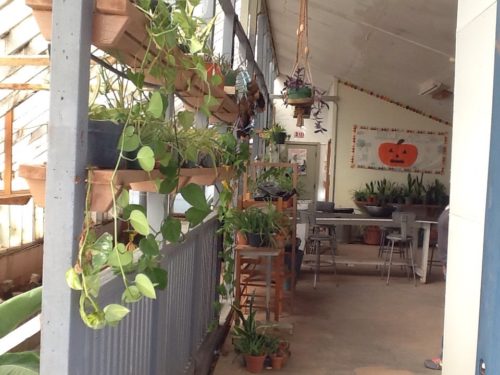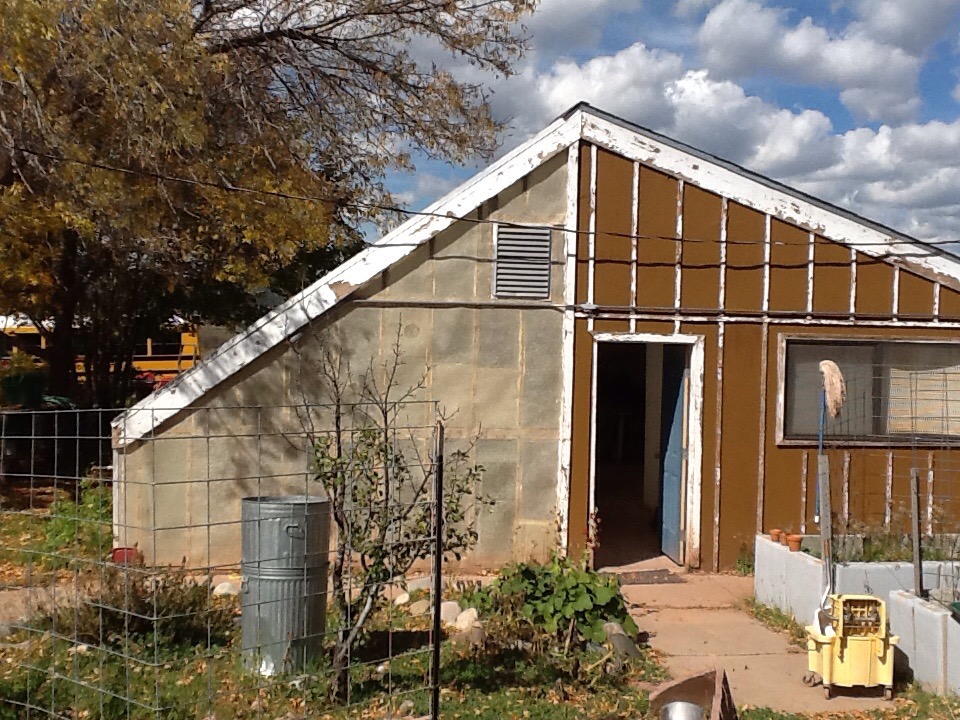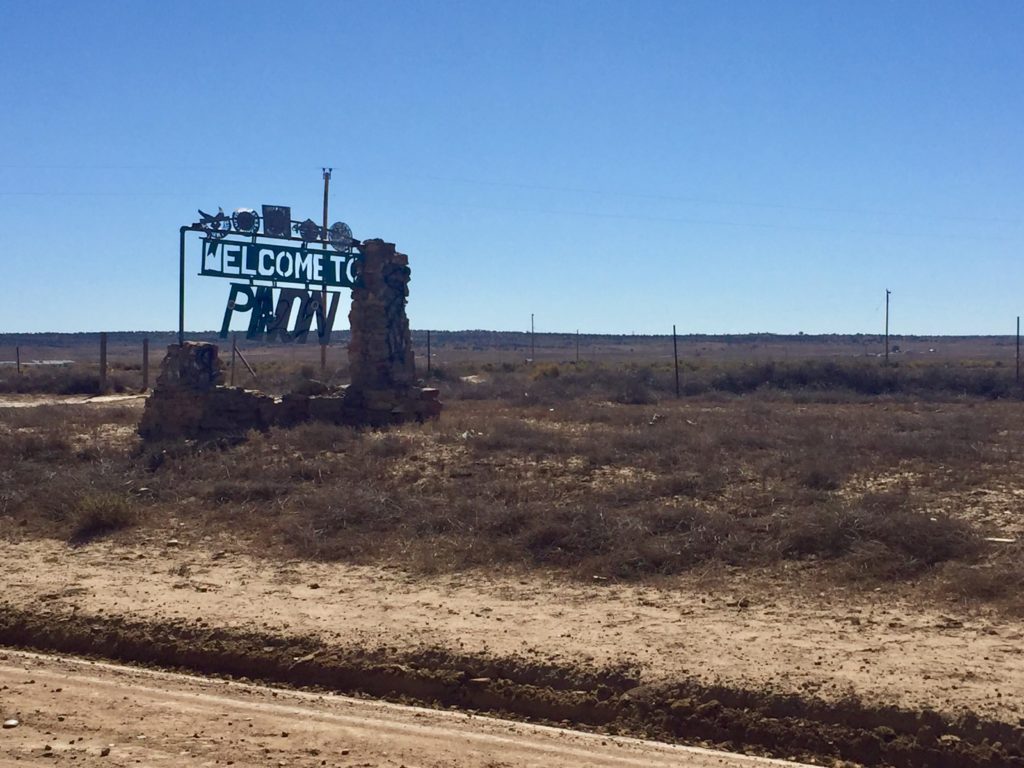At first glance, it would seem like the Navajo community in the Arizona high desert has little in common with the inner city neighborhoods of Washington, D.C.
Both areas though, are food deserts, where residents can’t buy produce or other healthy foods because there aren’t any to be found.
In Washington, D.C. and other major U.S. cities, food deserts are located in low-income areas. There are no grocery stores there – just corner markets where residents can buy potato chips or soft drinks, or maybe canned soup – but not fruits or vegetables.
“There aren’t enough full-service grocery stores that serve fresh fruits and vegetables.”
If you’ve got a car, you can drive a few miles to a grocery store outside of the city – but many inner-city residents don’t have cars; or the time and mobility required to take public transit out for a shopping trip; or the wherewithal to carry more than a single bag of groceries on the bus or train.
In Arizona, it’s both different and the same. Within much of the Navajo Nation, the only places to buy food are convenience stores. Like the corner stores of Washington, D.C., they sell snacks and often cheese fries, but no produce.
Navajo families usually have cars or trucks, but in Arizona, the nearest grocery store isn’t a couple of miles away – it’s more like 60 miles away.
So just as in D.C., the poorer families of Arizona live on Hot Pockets and canned pasta, potato chips and Coke, and other quick snacks bought from quick-stop stores.
“There are too many transportation barriers to accessing nutritious food,” said Renée Kube, Director of U.S. Programs for Children Incorporated. “There aren’t enough full-service grocery stores that serve fresh fruits and vegetables.”
Solving the Problem

Growing plants and vegetables at school
In Washington, D.C., Children Incorporated has been solving the problem by launching farmers’ markets in the schools. The Joyful Food Market is a partnership program between Children Incorporated and local non-profit Martha’s Table, which allows families to shop for fresh produce just as at any other farmers’ market.
The only difference is that at the Joyful Food Market, everything is free. Families are allotted specific portions of each item, and they can walk through the aisles themselves to select what they want. Children are allowed to do the shopping too; some parents can’t get to the market after school, so volunteers help the children shop for their entire families.
The Joyful Food Market approach doesn’t work in rural Arizona though, partly because so many of the children live at school rather than at home.
So Children Incorporated volunteers are taking a different approach there.
Out West
The Navajo Nation consists of 25,000 square miles of land, but no real cities. Flagstaff, Page, Albuquerque, Farmington, and Durango are all well outside of the Navajo Nation, and each requires a long drive across bad roads in order to get there.
Inside the Navajo Nation, Children Incorporated works in several schools, helping provide students and their families with clothes, shoes, hygiene items, and school supplies – plus, of course, healthy food.
Kube visited the Navajo Nation schools last October with Shelley Oxenham, Children Incorporated’s U.S. Project Specialist. Together, they discussed with volunteer coordinators the different needs and programs at each school.
“Gardens need to be built with a wind break; otherwise, the plants often cannot survive,” Oxenham said. “They’re working out how to do this and how to fund it.”
What the schools have in common is that most of their students are poor. Many don’t live with their parents, because their parents aren’t in the picture at all, or because their parents have taken work in remote locations. Children live with other relatives or at school; and while most aren’t starving, they suffer from food insecurity, poor nutrition, and a lack of money for basic necessities.
Gardens in the Desert
Teachers and volunteer coordinators at the Navajo schools focus on academics, as well as on life skills and health. To meet their goals, several schools have implemented gardening programs.
The Saint Michael’s Association for Special Education provides education and care for children who are mentally or physically disabled. The school has built a handicap-accessible garden with paths and plant beds built for easy access by students in wheelchairs.
The idea, Kube said, is to add nutritious food to the children’s diets whenever possible, and also to give the children hands-on experience working in the garden and helping to make plants grow. The children raise houseplants and flowers in addition to vegetables, which the cafeteria staff prepares for student meals.

A greenhouse where students learn to grow vegetables and fruits
There aren’t a lot of crops that grow well in the desert, but corn, beans, and squash – collectively referred to as the “three sisters” – do well, and when planted together, help one another to grow. They are at the center of Native American cooking traditions, and are grown in school programs and at home by the children’s families.
Pinon Community School is another Navajo school served by Children Incorporated. George Tso, the residential hall manager at the school, helps the students perpetuate their cultural heritage by working with local elders to teach them traditional Navajo skills, such as weaving, butchering meat, and building sweat lodges.
And, of course, raising crops.
“They’re growing corn, cilantro, habanero peppers, strawberries, squash, and tomatoes,” said Oxenham. “They also have two beehives set up with bees to pollinate the plants.”
Challenged by geography
Rocky Ridge Boarding School is one of the most rural in the area, accessible only by dirt roads on the border between the Navajo and Hopi Nations. Most of the students at Rocky Ridge are day students, but some stay at school all week. (Many of the Navajo schools have boarding options, generally because families live too far away, and the dirt roads become nearly impassable during the rainy season.)
Rocky Ridge is trying to implement a garden plan that children can replicate at home. Instead of building a large greenhouse or a huge school-wide garden, school administrators envision little garden plots that are easy for children to build themselves. That way, Oxenham said, they can build their own gardens at home using the skills they learn at school.
But there’s a hitch. Many Navajo families have no running water, and some have no electricity – so otherwise simple tasks become difficult.
It’s all part of a greater effort to get nutritious food, rather than just any food, to the nation’s poorest children.
“Many families haul water, so there is a lack of excess water to be used for things like gardens, which, in such a dry climate, would require a lot of water,” she said.
Then there’s the wind.
“Gardens need to be built with a windbreak; otherwise, the plants often cannot survive,” Oxenham said. “They’re working out how to do this and how to fund it.”
Healthy Eating for Life
It’s all part of a greater effort to get nutritious food, rather than just any food, to the nation’s poorest children.
“The matter of adding more fresh fruits and vegetables to people’s diets has come to the forefront,” Kube said. “Interest is growing amongst the coordinators, and it’s an area we have identified as one for current and future Hope in Action Fund proposals.”
***
HOW DO I SPONSOR A CHILD IN Arizona?
You can sponsor a child in Arizona by calling our office and speaking with one of our sponsorship specialists at 1-800-538-5381 or by emailing us at sponsorship@childrenincorporated.org.

